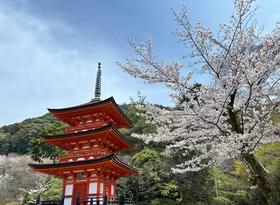The tourism recovery has been uneven, with different country or region markets in focus. Over the 2024 calendar year, the US cemented itself as New Zealand’s second-largest inbound visitor market, with 11% of total tourist arrivals. The US market has fully recovered back to pre-pandemic levels over 2024. In comparison, China has slipped back to New Zealand’s third-largest market (from second-largest back in 2019), with only a 61% recovery over 2024.
As our Chart of the Month shows, the purposes for why visitors are coming to New Zealand have also experienced an uneven recovery.
Business travel hasn’t bounced back as much
Although annual tourism arrivals into New Zealand over 2024 recovered to 85% of pre-pandemic levels, not all travel purposes have recovered in the same, or at the same speed. As Chart 1 shows, the largest contributor to inward tourism – those coming to New Zealand for a holiday or vacation – recovered to 81% over the 2024 calendar year. Being equivalent to nearly 51% of total tourism arrivals, this holidaying group is the core visitor group for New Zealand.
But it wasn’t this travel purpose that had the best recovery – relative to pre-pandemic levels and excluding the “other” grouping. That award goes to those travellers visiting friends and family (VFF). Over the 2024 calendar year, VFF visitors rose back to 96% of pre-pandemic levels. Although this recovery is high, VFF visitors spend less than half as much per day as average travellers to New Zealand.
The third largest traveller group, business travellers, has had the smallest recovery so far, reaching just 58% of pre-pandemic levels over 2024. The recovery had increased to 66% in the first half of 2024, but fell back over the rest of the year. Similarly, conference and convention attendees reached just 74% of pre-pandemic levels, after also hitting a higher recovery (up to 85% in September) before falling back away.
The smallest group, those travellers in New Zealand for education, had recovered back to 70% over 2024.
Holidays are in, while organisations cut costs
It noticeable that the tourism recovery for non-holiday activity has stumbled and slightly reversed over 2024, even as holiday travel has continued to recover. The pull-back in business and conference travel from overseas visitors to New Zealand has some parallels with report of domestic travel in New Zealand, with business and government travel budgets being cut amid weaker financial conditions.
Business and conference trips are also easier to replace than holidays – video calls can and to an extent have replaced face-to-face meetings and presentation. Webinar email invites seem to fly thick and fast. But it’s much more difficult to experience and appreciate New Zealand’s beauty through a screen.
The government has recently been announcing various policy changes to support further tourism activity. First was opening up access for digital nomads – which might bolster some arrivals, but also likely legitimises some travellers who were already in New Zealand and didn’t realise they might technically be in breach of their visa.
The recent announcement of an advertising campaign for Australian visitors aims to both support the largest tourism market back to full strength, but also to help smooth the peaks of New Zealand’s tourism season, enhancing how well our tourism activity is utilised over the entire year – instead of getting full use during peak times and then sitting more idle during the shoulders and down season.
Importantly, our analysis shows that there’s more than one single motivation for visiting New Zealand. A diversified focus, encouraging different parts of the market back to New Zealand, seems a sound strategy.











